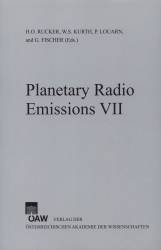
Planetary Radio Emissions VII, pp. 541-550, 2011/12/29
Proceedings of the 7th International Workshop on Planetary, Solar and Heliospheric Radio Emissions held at Graz, Austria, September 15–17, 2010

Locating low frequency radio observatories on the lunar surface has a number of advantages, including fixed locations for the antennas and no terrestrial inteference on the far side of the moon. Here, we describe the Radio Observatory on the Lunar Surface for Solar studies (ROLSS), a concept for a near-side, low frequency, interferometric radio imaging array designed to study particle acceleration in the corona and inner heliosphere. ROLSS would be deployed during an early lunar sortie or by a robotic rover as part of an unmanned landing. The prime science mission is to image intense type II and type III solar radio bursts with the aim of determining the sites at and mechanisms by which the radiating particles are accelerated. Secondary science goals include constraining the density of the lunar ionosphere by searching for a low radio frequency cutoff of the solar radio emissions and detecting the low energy electron population in astrophysical sources. Furthermore, ROLSS serves as a pathfinder for larger, far-side lunar radio arrays, designed for faint sources.